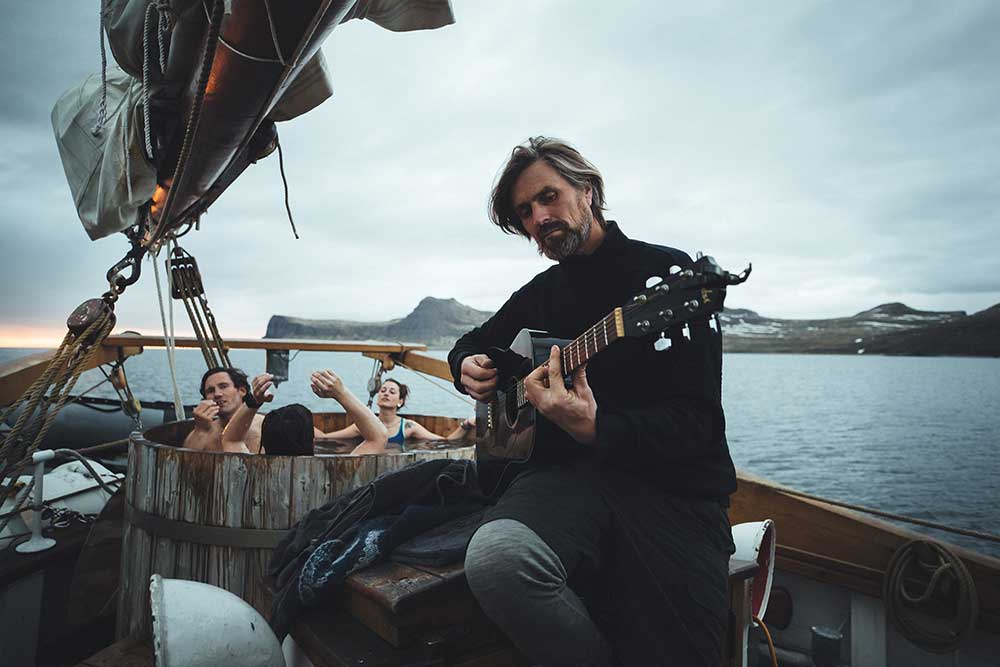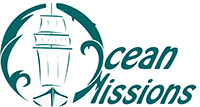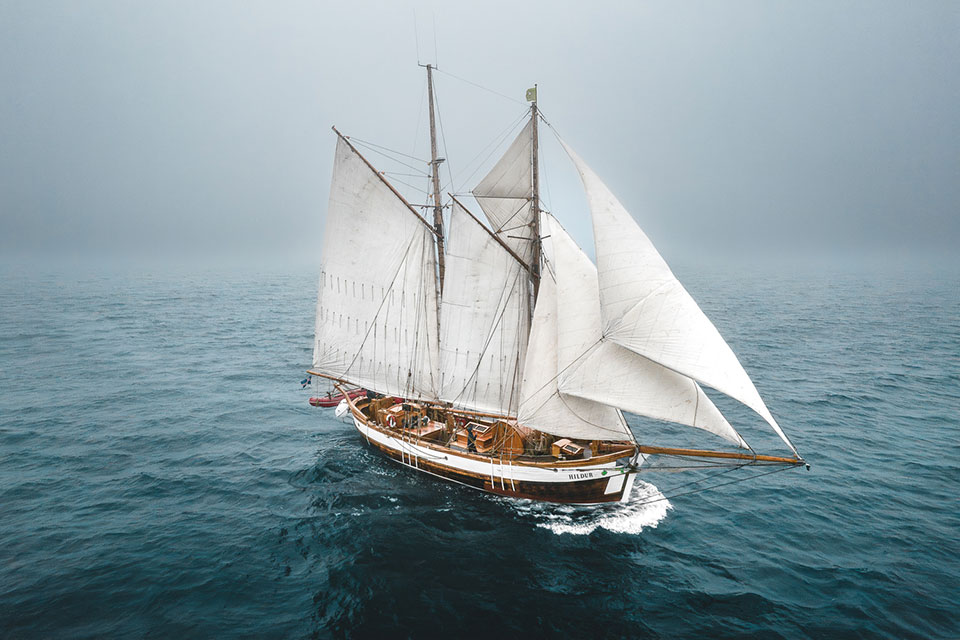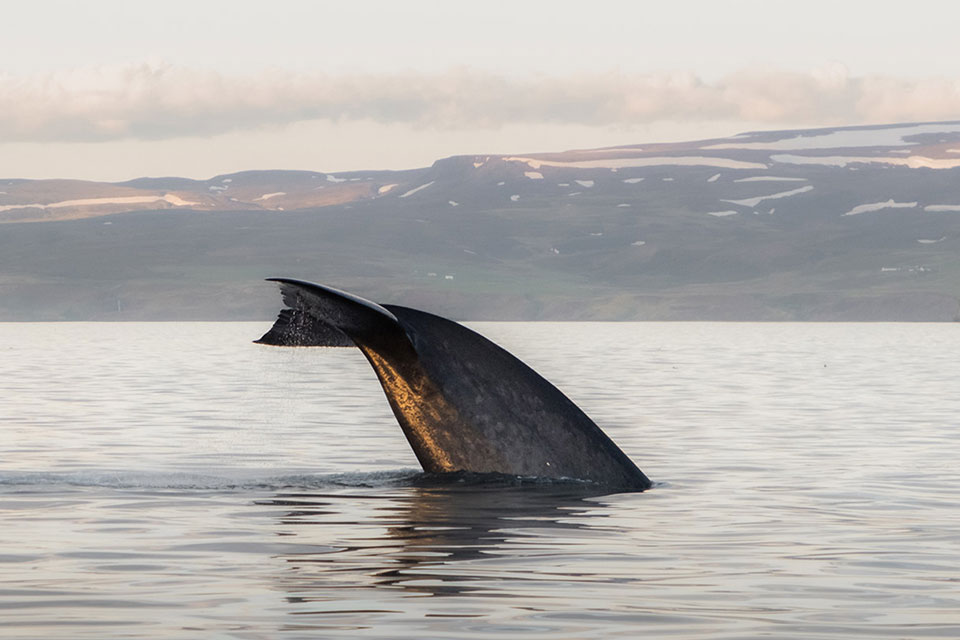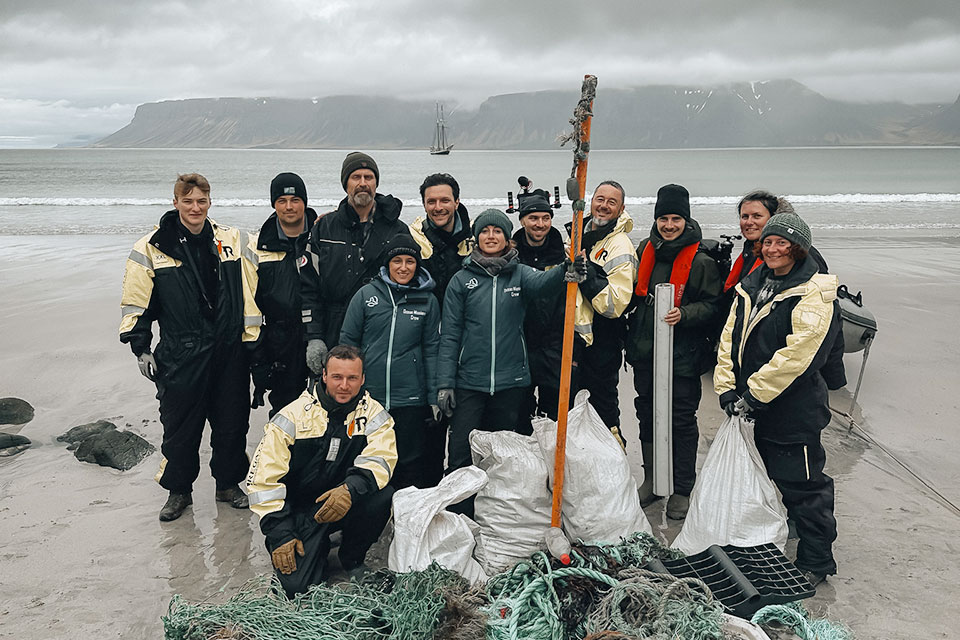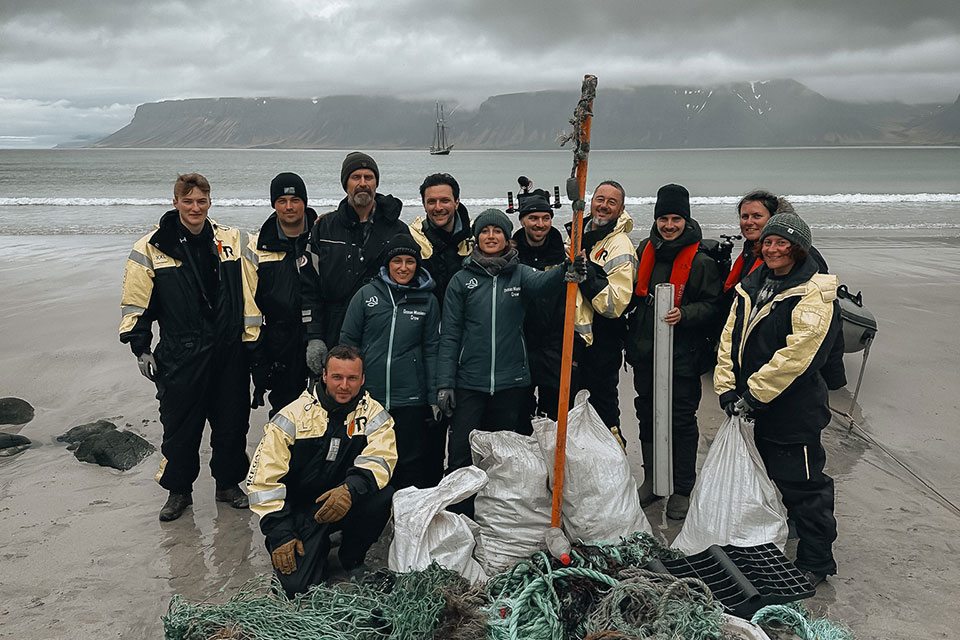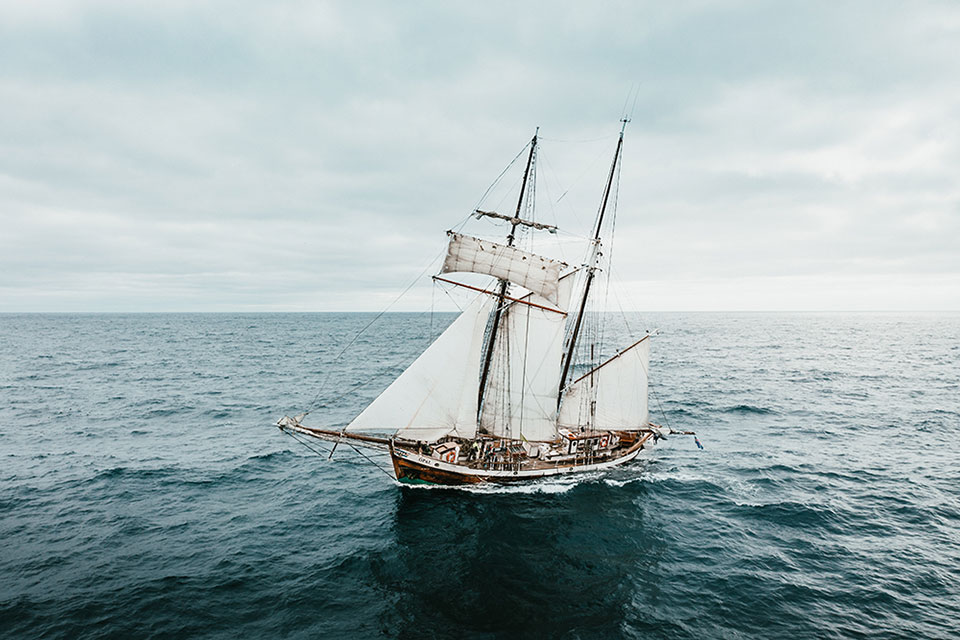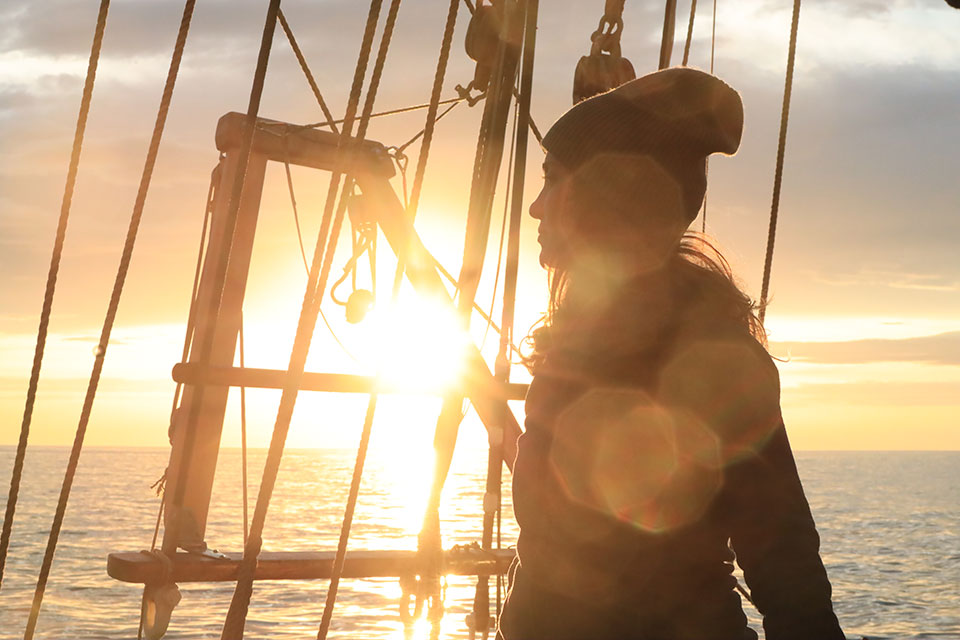“How We Became Ocean Ambassadors” – Expedition May 2020
I’ve been struggling to find words to accurately sum up the expedition we went on May 28th to June 3rd 2020. Words just aren’t enough in this case, but I’m going to give it my best shot. (Fortunately, these little words are complemented with the moving pictures filmed and put together by Ása Steinarsdottir. So if my words won’t give you a sense of what it’s like to sail around Iceland on a mission for sustainability, I can guarantee you that the video will).
The year 2020 will probably go to history as some kind of a stepping stone for a new, better future. At least that’s what I’m hoping for. So far, this year has been a cascade of global happenings that has changed the way I look at the world. Firstly, the global pandemic known as Covid-19 was (I believe) the planet’s way of saying that enough is enough. Then, George Floyd was killed by American police, leading to a serious evaluation and demand for change when it comes to black people’s rights. Along with some devastating bushfires in Australia, several natural disasters around the world, Middle East plane crashes and Russian oil leaks, the year is off to kind of a rough start. And it’s only June 11th as I’m writing this. I’m bringing this up because it emphasizes why our mission with OM is so important. I have chosen to take these global catastrophes and uprisings with an optimistic mindset, and the hope that it can pave the way for a brighter future once and for all.
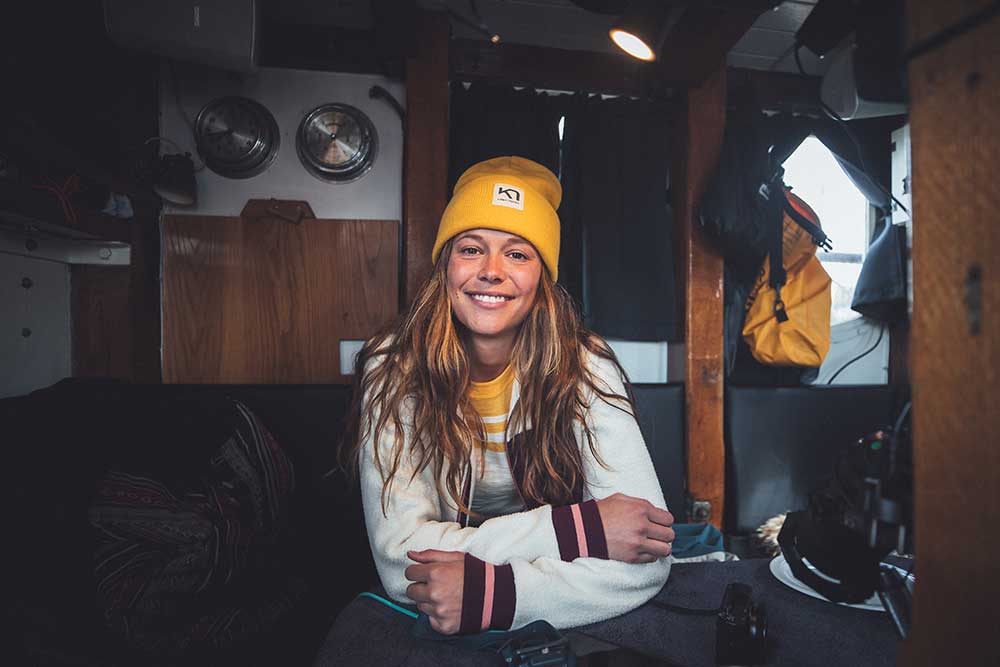
Leading up to anchors aweigh, I was sitting at home in Sweden on the phone with the Directory of Health in Iceland, the Icelandic Embassy in Stockholm and Iceland Air – to name a few authorities. The country I was trying to enter was still in their Corona caused lockdown, not letting anyone into the country who didn’t have a specific reason of going there. Luckily, I had a specific reason. Two days before my departure, I got the approval that I could enter Iceland without ending up in a 14 day quarantine, and that’s when I actually started to realize that my dream of sailing with Ocean Missions was about to come true. I hadn’t dared to believe it before — I was almost certain that something was going to come in the way of the trip.
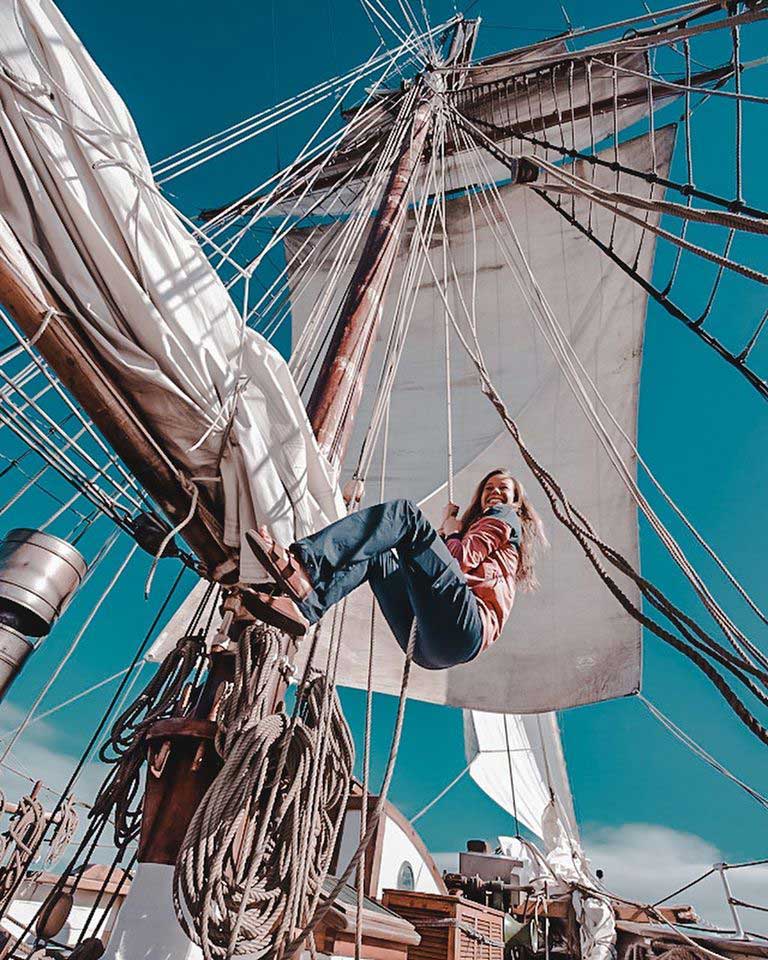
Two days later I was on my way, and after a flight with about 20 other people on board, I landed in Reykjavik and stepped onto Òpal – the Schooner ship that was going to take us to Húsavik on the other side of the island, via the majestic Westfjords. I had never been on a sailing boat before, which only made my first impression of the boat that much stronger. She was going to be my home for the next seven days! (Read more about Òpal here). As the team of eight got acquainted, I no longer had any doubt that this was going to be an absolutely epic week. We were a great mix of adventurers, marine biologists, photographers and sailors from Canada, Spain, Sweden and Iceland who have one major thing in common: The love for the oceans. We hoisted sails, and here comes the story of the coolest seven days of my life.
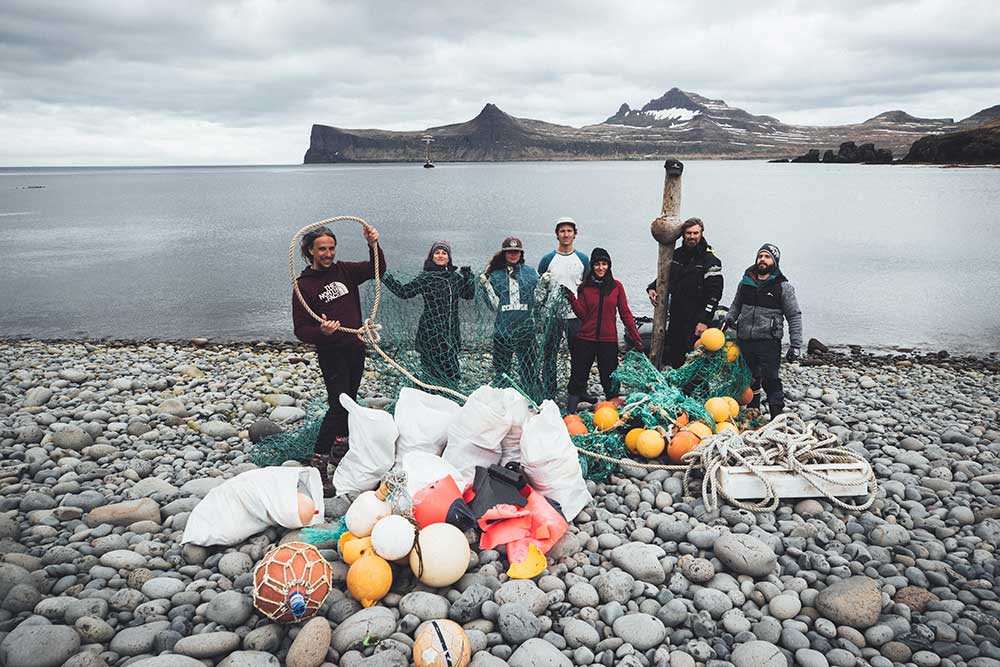
Is there a better way of starting your day than by waking up on a boat in the middle of the North Atlantic Ocean? I don’t think so.
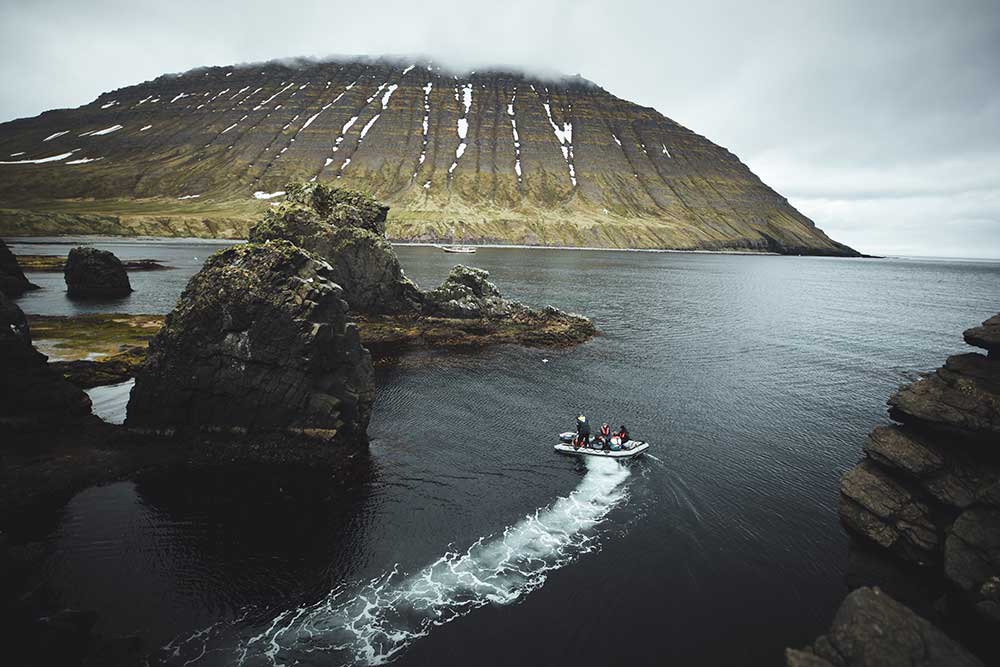
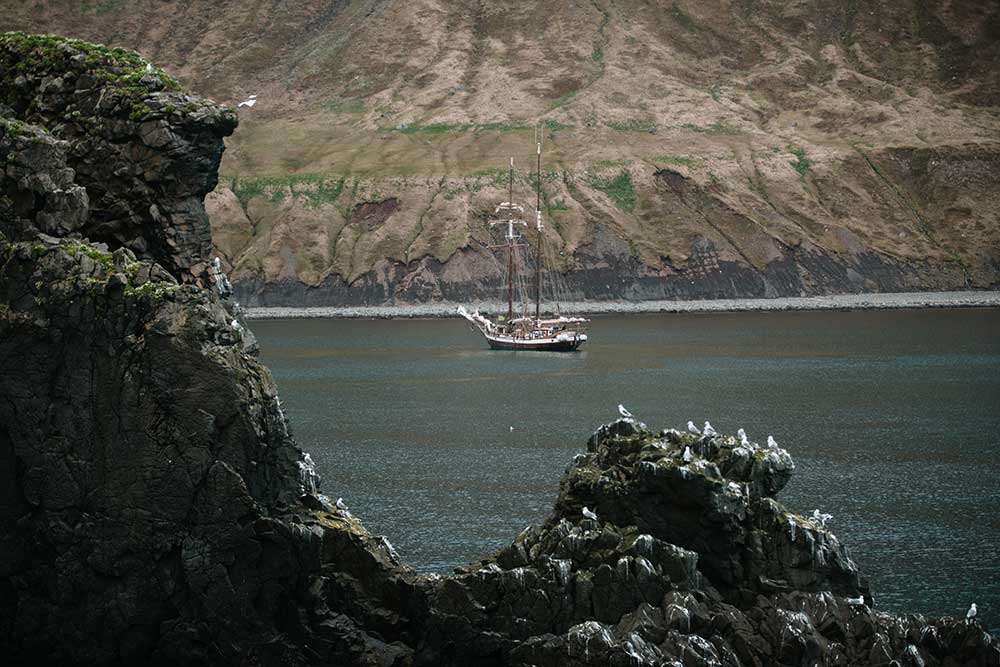
Having your first cup of coffee while looking over the fjords, the water and the mountains of West and North Iceland is really something special.
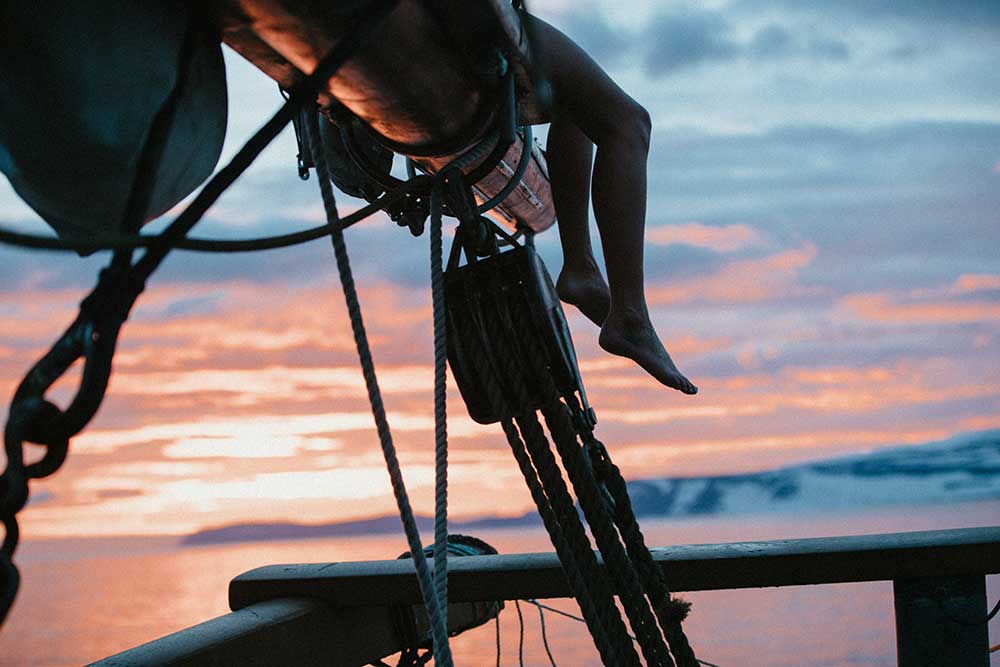
The days consisted of sailing, or in my case; learning how to sail from one of Iceland’s best captains, captain Heimir, and the founder of OM, Belén. Hoisting sails and coiling ropes and navigating through deep waters and steering a 24 meter long ship was an entirely new experience for me. I tried to soak up as much information as I could — but it’s not easy remember which rope leads to which sail when you have 10 different sails on board.
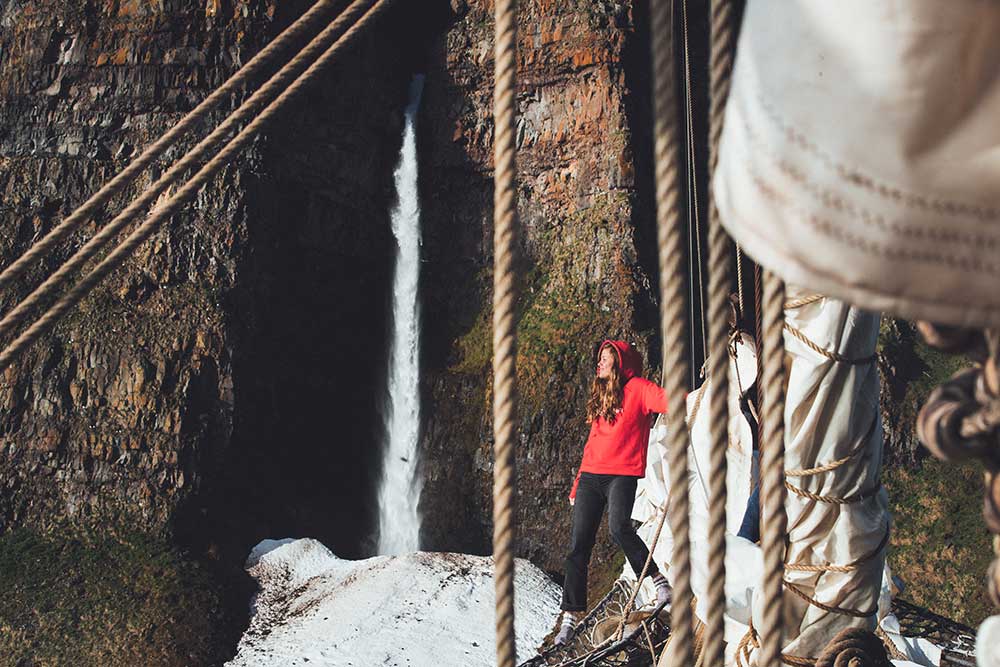
While trying to help out as much as I could, I observed the people on the crew. Besides Heimir and Belén, the crew also consisted of photographer and marine biologist Daniel and whale expert Charla. These four people who together form Ocean Missions and who lead our expedition have left a huge mark on me.
Rarely have I met people who are so passionate, knowledgeable and tireless yet also amazingly funny, sweet and humble as these four wonder-humans are. I want to reach out a special thanks you to guys, for welcoming me with open arms (actually also making phone calls to Iceland’s head doctor to get me across the border) and for teaching me probably just a fraction of what you know — but a lot of what now know.
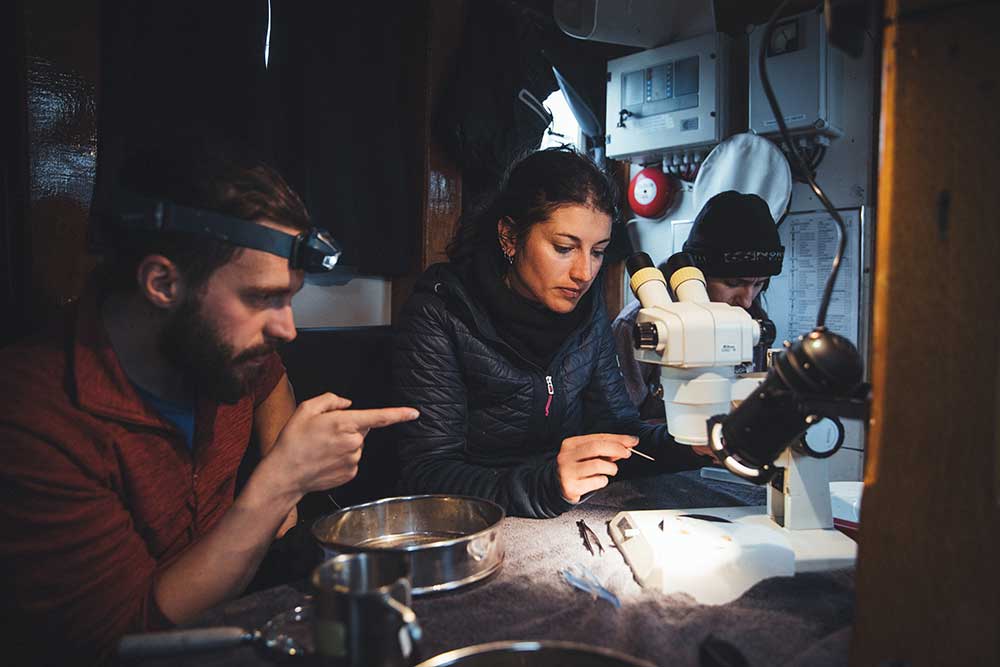
Every day we learnt things about how oceans are affected by climate change and pollution, mainly through the different surveys we executed. We did six different manta trawls to investigate the amount of micro plastics circling on the water surface. We used a very fine net, a buoyant device and ropes to let the manta glide next to the boat for three times thirty minutes per survey.
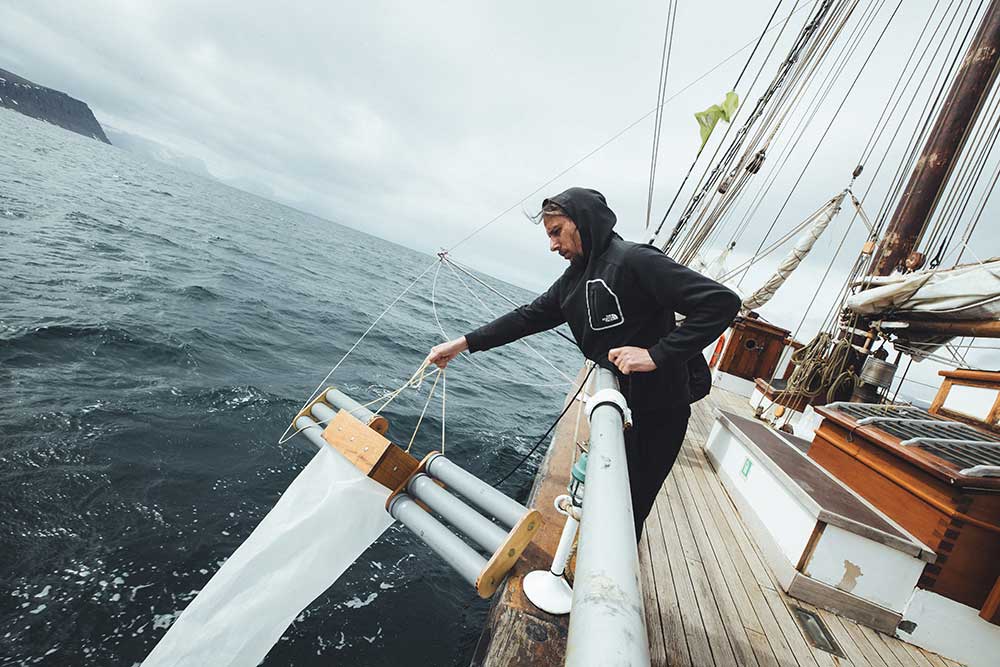
We went through the catch with 1) our eyes, 2) a microscope and 3) a lighter and a nail to try to distinguish the plastic materials from the organic ones. We found quite a lot and the results will be released on a later date. In addition, we did a few different beach clean ups and the findings were shocking. In the most remote places of Iceland — extremely far away from civilisation — we picked up about 300 kg of plastic. And that was only the amount that we managed to take with us on the boat — it kind of made us wish we had a cargo sailing ship so we could stay and pick up more.
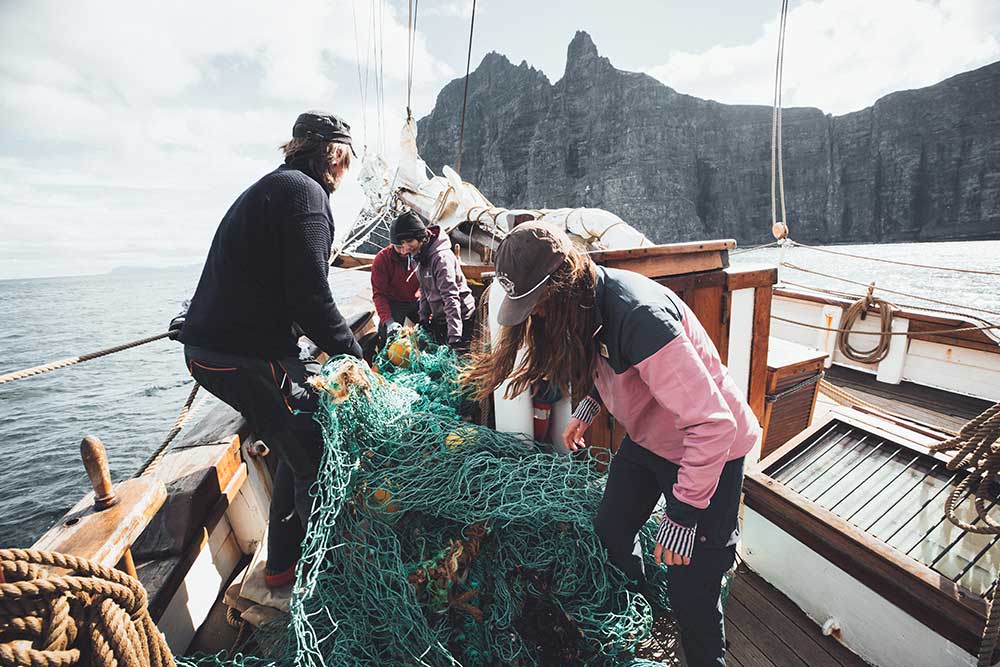
We also investigated the wildlife, and while being amazed by the animals we were lucky to see, we also learnt some alarming facts. For example, puffin bird colonies are dwindling on many parts of the island due to the warmer ocean temperatures and humpback whales who didn’t even live in these waters 20 years ago are now a common sight due to the same reason.
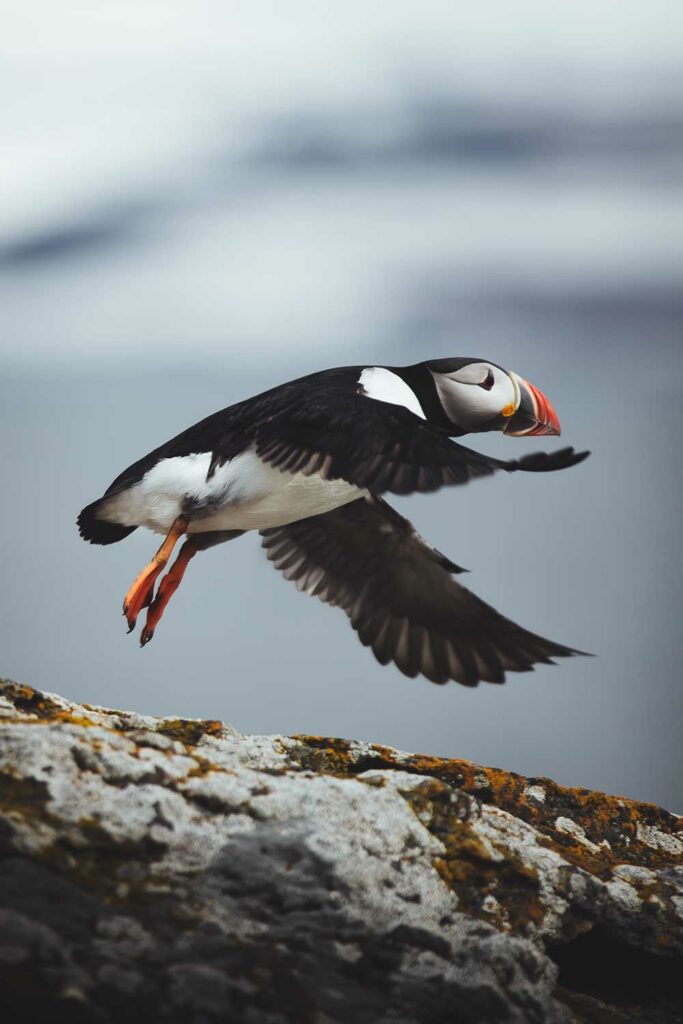
What do we do with all these frightening facts? It’s a bit overwhelming actually. Seeing with my own eyes some of the things that are happening in the oceans has strengthen my desire to contribute to a better planet. But how do we do that? Me and Belén had a long, great talk about this and came to the conclusion that it all has to do with every single person on this planet doing the very best we can. It’s not harder than that. All of us can do something, and it’s about time we all contribute. I wanted to go on this trip because I have seen how climate change has affected my home mountain.
I’m from a ski resort in Northern Sweden, and the declining amount of snow as well as the warmer winters makes me terrified that I’m not going to be able to enjoy my favorite activity skiing for the rest of my life. I wanted to build the same relationship with the oceans, and after my expedition with OM I have. I want so badly for all the people who don’t have that connection yet, to go out in nature and build a bond with it that fires up the motivation needed to take action. If you’re unsure of how to do that, I have a solution for you: GO ON AN OCEAN MISSIONS EXPEDITION.
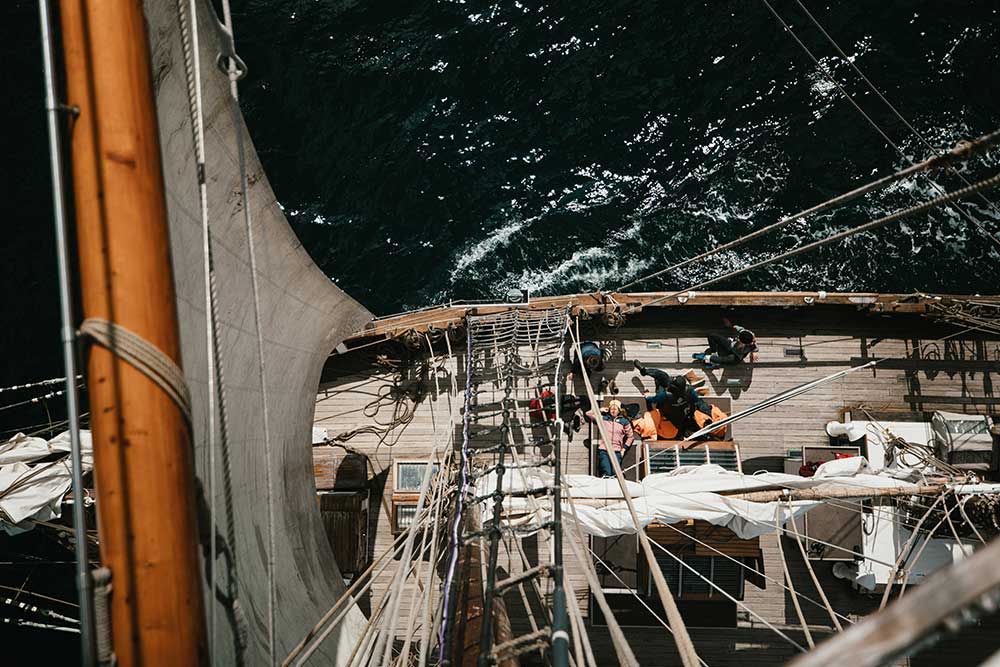
To summarize a story that I could go on writing about for the length of a novel, I want to emphasize the meaningfulness of the trip. To me, this trip was so much more than just a cool adventure. It was a way of experiencing a new world while learning how to contribute to the wellbeing of the oceans and by extension, the planet.
From sitting in the on-deck hot tub with the best photographers and storytellers I know; Ása and Leo, to having interesting discussions with crazy, inspiring Antonio, to thoroughly going through the insides of a fish stomach, to climbing up on the mast and feeling the ocean breeze in my face — this trip has left me with a yearning to do more, to feel more, to be more.
